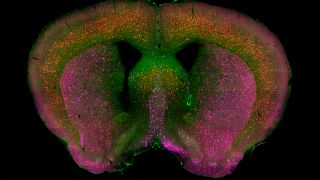Millions of Americans have endured “the long goodbye,” helplessly watching loved ones succumb to Alzheimer’s disease. New treatments offer hope in slowing its progression, but their success depends on accurate diagnosis. Until Medicare revises its coverage policy for the diagnostics that facilitate these treatments, very few seniors and their families will benefit.
Alzheimer’s is the most common cause of progressive cognitive and functional decline, known as dementia. Historically, an Alzheimer’s diagnosis was based on history and examination and could only be confirmed with an autopsy. This made detection, treatment, and clinical research a complex and difficult task. Alzheimer’s therapies may have failed because some participants did not actually have the disease, but perhaps another form of dementia.
New brain imaging technology, specifically for detecting amyloid, called amyloid PET scans (positron emission tomography) allows clinicians to see the hallmark pathology of Alzheimer’s—amyloid plaques—in the brain of a living person. Despite receiving FDA approval in 2012, just as with new therapies, CMS limits access to amyloid PET to those participating in a government-approved clinical trial. Medicare coverage is also limited to one scan per lifetime. During the past decade over 30 studies have clearly demonstrated the clinical value of amyloid PET imaging. In the largest Alzheimer’s study ever, PET imaging revealed that nearly 36 percent of people given an Alzheimer’s diagnosis by dementia specialists had little or no amyloid plaques present in the brain and thus may have been misdiagnosed.
These scans are integral to clinical trials to validate the effects of emerging Alzheimer’s treatments—and the Department of Veterans’ Affairs policy change in February confirmed it. New therapies depend on the technology to help clinicians confirm which patients may benefit from amyloid-targeting treatments, and to ensure that patients who won’t benefit don’t take on the associated costs and risks of treatment.
Timing is critical. The offending plaques accumulate up to twenty years before symptoms or cognitive decline appear. Early and accurate diagnosis helps clinicians determine the best course of management and offers patients the best opportunity to benefit from new therapies. This is especially true for Alzheimer’s patients, who will benefit the most from newly approved treatments during the early stages of disease before pathology becomes even more widespread in the brain. Lack of coverage for amyloid PET presents a real barrier to clinicians and their effective management of patients living with the disease. The Alzheimer’s Association estimates that about 2,000 seniors progress from mild to moderate dementia every day—putting them beyond reach of new therapies.
Medicare can remove coverage restrictions for amyloid PET imaging by trusting clinicians to discern when they are appropriate for clinical use. Knowing a patients’ amyloid status allows for an accurate diagnosis, minimizes the risk of misdiagnosis, avoids unnecessary treatment, and can put patients on the optimal management path earlier. Broader use of the technology will also accelerate our understanding of the disease, fueling innovation in treatment strategies and the development of new therapies—including possible prevention.
Patients with Alzheimer’s disease don’t have the luxury of time and deserve immediate action. They should have access to FDA-approved diagnostics that provide them with a more accurate diagnosis at an early timepoint. Their families and caregivers deserve the opportunity to help their loved ones preserve their independence and dignity for as long as possible. Providers should have access to diagnostic amyloid PET to deliver the best possible care, especially for a disease that impacts millions of seniors and touches all of us in some way.
Raymond Scott Turner, MD, PhD, is Vice Chair for Clinical Research, Professor of Neurology, and Director of the Memory Disorders Program, MedStar Georgetown University Hospital.
Read Full Article »




